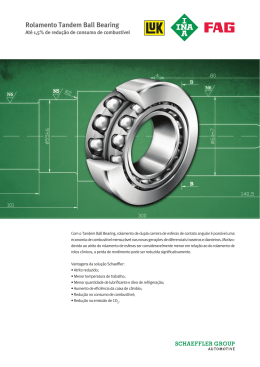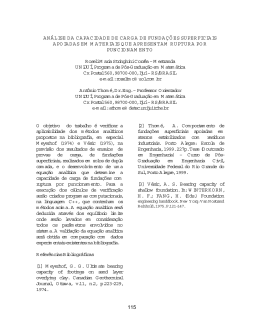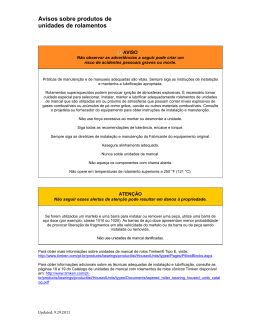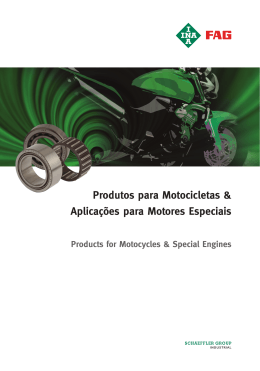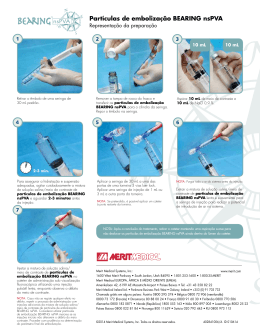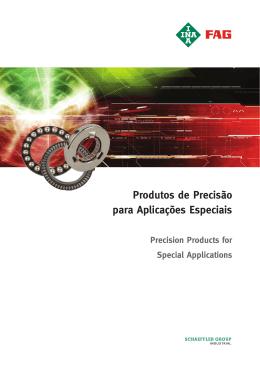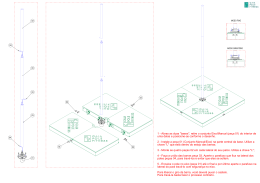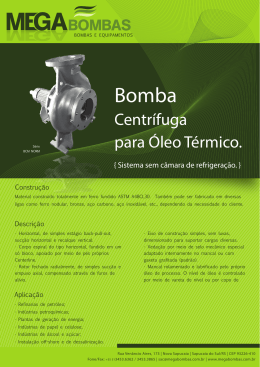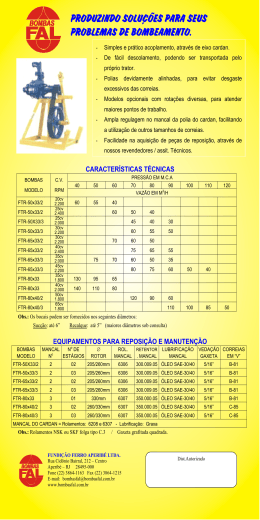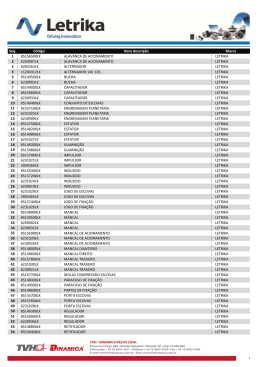tE METAL PATENTE – BABBITT BABITT Babbitt, Metal Patente ou Metal branco, é uma liga não ferrosa branca, mole, utilizada para proporcionar uma superfície de apoio. Ele tem propriedades que ajudam a reduzir o atrito que o torna um bom material para usar em um mancais de deslizamento. O “Babbitt foi criado por Isaac Babbitt, nascido em 26 de julho de 1799 em Taunton, Massachusetts. A fórmula original para o metal Babbitt era 89,3% de estanho, 7,1% de antimônio,e 3,6% de cobre, fórmula que ainda é comercializada hoje por alguns fabricantes como ASTM B-23 Grau 2 Babbitt ou como "Babbitt genuíno". Enquanto de metal Babbitt é macio e pode ser facilmente danificadoqu ando tratado inadequadamente, parecendo à primeira vista um candidato improvável para uma superfície de apoio, a sua aparência é enganadora. A estrutura da liga é constituída por pequenos cristais duros dispersos em uma matriz de liga mais suave. À medida que o rolamento gasta os cristais duros são expostos e isso fornece uma passagem para o lubrificante entre os pontos mais altos que proporcionam a superfície de apoio. Babbitt metal, also called white metal, is a soft, white non-ferrous alloy used to provide a bearing surface. It has properties that help reduce friction which make it a good material to use in a plain bearing. Babbitt was first created by Isaac Babbitt, born July 26, 1799 in Taunton, Massachusetts. The original formula for Babbitt's bearing metal was 89.3% tin, 7.1% antimony and 3.6% copper and that formula is still marketed today by some manufacturers as ASTM B-23 Grade 2 Babbitt or as "Genuine Babbitt". While Babbitt metal is soft and can be easily damaged when treated improperly, and seems at first sight an unlikely candidate for a bearing surface, its appearance is deceptive. The structure of the alloy is made up of small hard crystals dispersed in a matrix of softer alloy. As the bearing wears the harder crystal is exposed, with the matrix eroding somewhat to provide a path for the lubricant between the high spots that provide the actual bearing surface. O princípio de como Babbitt funciona é realmente muito simples. De modo que qualquer mancal trabalhe bem, ele deve criar uma situação em que exista um baixo coeficiente de atrito. No caso das mancais de deslizamento, este baixo coeficiente de fricção é realizado por dois meios. Em primeiro lugar, o próprio material (o Babbitt) tem um coeficiente de atrito relativamente baixo. Isto significa que, mesmo sem lubrificação, os mancais de Babbitt terá de atrito muito menor do que se fosse feito de outros metais, tais como aço ou ferro fundido. No entanto, com a adição de lubrificação simples, os mancais de deslizamento pode ter coeficientes de atrito surpreendentemente baixos - ainda mais baixa do que a dos rolamentos de esferas. The principle as to how Babbitt works is really quite simple. In order for any bearing to work, it must create a situation where there is a low coefficient of friction. In the case of Babbitt bearings, this low coefficient of friction is accomplished by two means. First, the bearing material itself (the Babbitt) has a relatively low coefficient of friction. This means, even without lubrication, Babbitt bearings will have much less friction than if a shaft was turning in other metals such as steel or cast iron. However, with the addition of simple lubrication, Babbitt bearings can have amazingly low coefficients of friction even lower than that of ball bearings. TIPOS DE BABITT E SELEÇÃO (BABBITT TYPES AND SELECTION) Os metais patentes (Babbitt) são divididos em duas familias: à base de estanho e à base de chumbo. Babbitt à base de estanho é a melhor escolha para a alta velocidade ou mancais de difícil lubrificação, enquanto aqueles à base de chumbo funcionam melhor à baixas velocidades ou cargas elevadas. Para definir qual o melhor material para o mancal em função da sua aplicação, as seguintes sugestões podem ser adotadas: Babbitt metals can generally be broken into two major families: tin based or lead based. Tin based Babbitt is the best choice for high speed or hard to lubricate bearings while lead based works best with low speed or heavy load bearings. To determine which bearing material would be best for your application, the following are suggested guidelines: AB 15 tE Classificação do Metal Patente Babbitt Classification À base de Estanho Tin-Based Babbitts À base de Chumbo Lead Based Babbitts LIMITS Velocidade superficial Surface Speeds (# of Ft/min) min. max. Carga Load (Lbs/sq.in.) min. max. 1.000 2.400 0 2.000 100 1,000 0 500 Cálculo da Velocidade Superficial Velocidade superficial do eixo é definido como o número de pés girados por minuto pelo eixo circunferencialmente. Para calcular esse valor, usar a seguinte fórmula: Surface Speed Calculation Surface speed of the shaft is defined as the number of feet traveled per minute by the shaft circumferentially. To calculate this value for your shaft, use the following formula: Velocidade superficial = Surface Speed = ( p D rpm ) / 12 Onde : Where: p = 3.1416 D = Diâmetro do eixo em polegadas (Diameter of the shaft in inches) RPM = rotação em rpm (Revolutions Per Minute) A velocidade superficial de um eixo de D=2in que gira à 1500 rpm The surface speed of a 2-inch shaft going 1500 RPM. VS = 3.1416 x 2 x 1500 /12 = 785 ft/min Cálculo da carga do mancal (Bearing Load Calculation) A carga que o mancal necessitar suportar, é o peso que está sendo exercido por meio dos pesos combinados do eixo e quaisquer outros pesos diretos sobre o eixo e medida em libras por polegada quadrada The Load the bearing is required to carry is the weight which is being exerted through the combined weights of the shaft and any other direct weights on the shaft and measured in pounds per square inch Carga no mancal =Bearing Load = W / ID x L Onde: Where: W = Carga (peso) total a ser suportado pelo mancal que inclui o peso do eixo, polias, e outros acessório) (Total weight in lbs carried by bearing (includes shafts, pulleys, cutter heads, etc.) ID = Diâmetro interno do mancal em polegadas (Inside diameter of bearing in inches) L = Comprimento do mancal em polegadas (Length of Bearing in inches) Exemplo: Carga de um mancal de diâmetro interno 2 polegadas, 4 polegadas de comprimento suportando uma carga (peso) de 100 libras; Example: Determine the load on a bearing of a 2 inch inside diameter bearing, 4 inches long and carrying a weight of 100 lbs; W = 100 / 2 x 4 = 12.5 lbs/sq in AB 15 tE TIPOS DE METAIS PATENTES (LEAD BASED TYPES) ASTM B-23 Especificações de Babbitt - Babbitt Specifications Composição Química % Metais Patentes à base de Estanho Liga número (grau) Chemical Composition, % Tin Base Babbitt Grades Alloy number (grade) Estanho Antimonio Chumbo Cobre Ferro Arsenico Bismuto Zinco Aluminio Cadmio Total dos elementos listados, min 1 2 3 11 UNS-L13910 UNS-L13890 UNS-L13840 UNS-L13870 Tin Antimony Lead Copper Iron Arsenic Bismuth Zinc Aluminum Cadmium 90.0-92.0 4.0-5.0 0.35 4.0-5.0 0.08 0.10 0.08 0.005 0.005 0.05 88.0-90.0 7.0-8.0 0.35 3.0-4.0 0.08 0.10 0.08 0.005 0.005 0.05 83.0-85.0 7.5-8.5 0.35 7.5-8.5 0.08 0.10 0.08 0.005 0.005 0.05 86.0-89.0 6.0-7.5 0.50 5.0-6.5 0.08 0.10 0.08 0.005 0.005 0.05 Total named elements, min 99.80 99.80 99.80 99.80 Metais Patentes à base de Chumbo Liga número (grau) Lead Base Babbitt Grades Alloy number (grade) Composição Química % Chemical Composition, % 7 8 13 15 UNS-L53585 9.3-10.7 14.0-16.0 UNS-L53565 4.5-5.5 14.0-16.0 UNS-L53346 5.5-6.5 9.5-10.5 UNS-L53620 0.8-1.2 14.5-17.5 Estanho Antimônio Tin Antimony Chumbo Lead Restante (remainder) Restante (remainder) Restante (remainder) Restante (remainder) Cobre Ferro Arsenico Bismuto Zinco Aluminio Cadmio Total dos elementos listados, min Copper Iron Arsenic Bismuth Zinc Aluminum Cadmium 0.50 0.10 0.30-0.60 0.10 0.005 0.005 0.05 0.50 0.10 0.30-0.60 0.10 0.005 0.005 0.05 0.50 0.10 0.25 0.10 0.005 0.005 0.05 0.6 0.10 0.8-1.4 0.10 0.005 0.005 0.05 AB 15 Total named elements, min
Download
